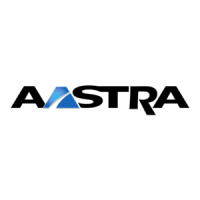Ascotel IntelliGate 2025/2045/2065
Part 3 Planning DECT systems 633
5.4.3.5 Traffic density
Once the supply range has been located and covered, the locations for the radio
units are known.
The second phase now looks at other requirements: The traffic volume, deter-
mined by the number of handsets and the frequency and duration of connections
in an area defined by the customer. In most cases such a zone does not match the
coverage range of a radio unit.
For each zone you now need to determine how many radio units are currently
being used to supply them. It may be necessary to boost the coverage with addi-
tional radio units for insufficiently supplied areas (in accordance with the cus-
tomer's requirements). To do so we need to refer back to the radio unit locations
that were determined for the area coverage. For instance, it is a good idea to place
additional radio units at the centre of a zone with a higher traffic volume, even if
those units end up between two already positioned radio units.
To determine the traffic volume, we assume three typical ranges: "low",
"medium", "high". "High" means that approx. 50% of all handsets are making
calls simultaneously. It is also important to note that the volume of traffic can vary
considerably in the course of a day. The question is always whether or not to cover
a traffic volume that may be higher only briefly in a particular zone.
The diagram below provides an overview of the recommended number of radio
units that cover the zone in relation to the handsets in that zone. Radio units have
a capacity of 4 channels (SB-4) and 8 channels (SB-8) respectively.

